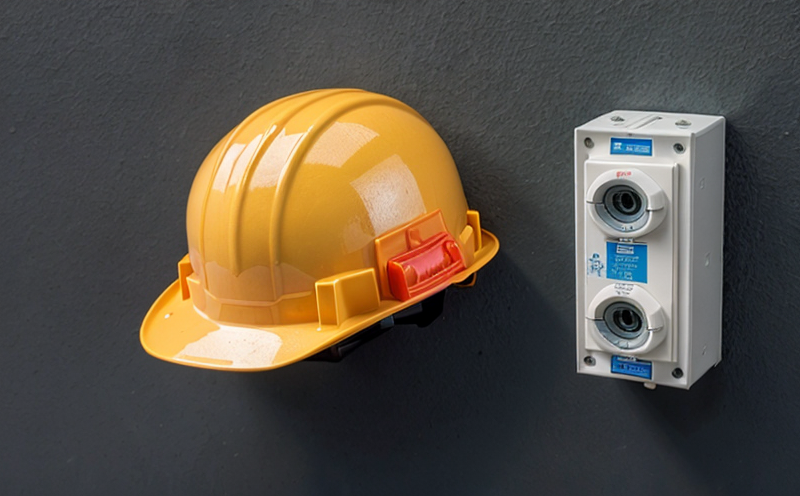Assessing the compliance of surge protection with safety and performance standards (e.g., UL 1449).
Assessing the Compliance of Surge Protection with Safety and Performance Standards Why Your Business Needs It
In todays fast-paced and increasingly technological world, businesses are more reliant on electrical systems than ever before. From powering machinery to illuminating workplaces, electricity is the lifeblood of modern commerce. However, this reliance also brings significant risks, particularly when it comes to power surges.
A power surge, or transient voltage spike, can cause irreparable damage to sensitive equipment, disrupt operations, and compromise safety. To mitigate these risks, regulatory bodies like Underwriters Laboratories (UL) have established standards for surge protection devices (SPDs). One such standard is UL 1449, which outlines the requirements for SPDs designed to protect against power surges.
What is Assessing Compliance of Surge Protection with Safety and Performance Standards?
Assessing compliance of surge protection with safety and performance standards, such as UL 1449, involves a thorough evaluation of your businesss SPDs against these regulations. This laboratory service, provided by Eurolab, ensures that your equipment meets the necessary criteria to safeguard personnel, property, and operations.
Why is Assessing Compliance of Surge Protection with Safety and Performance Standards Essential for Your Business?
The importance of assessing compliance with surge protection standards cannot be overstated. Here are some key reasons why
Protects Personnel and Equipment Compliant SPDs minimize the risk of electrical shock, fires, and equipment damage caused by power surges.
Meets Regulatory Requirements Compliance with UL 1449 ensures that your business meets or exceeds regulatory standards, reducing the likelihood of fines, penalties, or even business closure.
Enhances Business Reputation Demonstrating a commitment to safety and compliance can boost customer confidence and enhance your reputation in the industry.
Reduces Operational Downtime By minimizing equipment damage and maintenance needs, compliant SPDs help keep operations running smoothly and efficiently.
Key Benefits of Using Assessing Compliance of Surge Protection with Safety and Performance Standards
Here are some key benefits of using this laboratory service
Reduced Risk of Electrical Hazards
Improved Equipment Reliability
Enhanced Business Reputation
Compliance with Regulatory Requirements
Increased Operational Efficiency
Protection of Personnel and Assets
QA Frequently Asked Questions about Assessing Compliance of Surge Protection with Safety and Performance Standards
What is the purpose of UL 1449, and how does it impact my business?
UL 1449 outlines standards for surge protection devices (SPDs) designed to protect against power surges. Compliance ensures that your equipment meets regulatory requirements, safeguarding personnel, property, and operations.
How often should I assess compliance with safety and performance standards?
Regular assessments are recommended every 1-3 years, depending on factors like changes in equipment, modifications to the electrical system, or updates to relevant regulations.
What happens if my business is found non-compliant with UL 1449?
Non-compliance can result in fines, penalties, and even business closure. Its essential to demonstrate a commitment to safety and compliance through regular assessments and corrective actions.
Why Choose Eurolab for Assessing Compliance of Surge Protection with Safety and Performance Standards
Eurolab provides expert laboratory services tailored to your businesss unique needs. Our team of experienced professionals uses state-of-the-art equipment and follows strict quality control protocols to ensure accurate results.
Expertise Our technicians are trained in the latest standards, regulations, and testing methodologies.
Accuracy We guarantee precise results through rigorous quality control measures.
Customized Solutions We adapt our services to meet your specific business requirements.
By choosing Eurolab for assessing compliance of surge protection with safety and performance standards, you can trust that your business is protected from the risks associated with power surges. Dont wait ensure compliance today and safeguard your operations, personnel, and equipment tomorrow.
-
Testing lighting devices for protection against electrical surges or voltage spikes.
-
Verifying that lighting fixtures are equipped with surge protection mechanisms to prevent damage.
-
Assessing how lighting devices respond to sudden power surges caused by lightning, power grid issues, or equipment malfunctions.
-
Testing the durability of surge protection components under high-voltage conditions.
-
Ensuring that lighting systems meet international surge protection standards (e.g., IEC 61000).
-
Verifying the effectiveness of surge protectors in LED drivers, ballasts, and other lighting components.
-
Testing the impact of power surges on the longevity of lighting systems.
-
Testing for the presence of transient voltage suppression (TVS) components in lighting devices.
-
Evaluating surge protection in commercial, industrial, and residential lighting applications.
-
Testing lighting devices for over-voltage or under-voltage conditions to ensure safe operation.
-
Ensuring that surge protection works across a wide range of voltages (e.g., 110V, 220V).
-
Assessing how surge protection technology integrates with smart lighting systems.
-
Measuring the response time of surge protectors in lighting fixtures to mitigate voltage fluctuations.
-
Testing the surge protection capabilities of outdoor lighting systems exposed to storm conditions.
-
Verifying that surge protection functions properly in emergency and critical lighting systems.
-
Testing the safety and reliability of surge protection circuits under repeated surge events.
-
Testing surge protection for energy-efficient lighting systems such as LED and OLED.
-
Verifying that surge protection does not interfere with the normal operation of lighting systems.
-
Measuring the energy dissipation capacity of surge protectors in lighting devices.
-
Testing the response of surge protection devices when installed in multi-light systems (e.g., LED arrays).
-
Ensuring that lighting systems with surge protection meet insurance and safety requirements.
-
Testing surge protection in combination with other protective features like fuses and circuit breakers.




